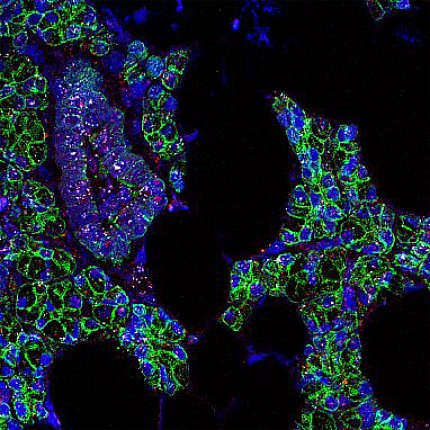SARS-CoV-2 May Infect Mouth Cells

Photo: Paola Perez/NIDCR
NIH researchers recently found that SARS-CoV-2, the virus that causes Covid-19, can infect cells in the mouth. The results appeared online in Nature Medicine.
“By revealing a potentially underappreciated role for the oral cavity in SARS-CoV-2 infection, our study could open up new investigative avenues leading to a better understanding of the course of infection and disease,” said senior study author Dr. Blake Warner, chief of the salivary disorders unit at NIDCR. “Such information could also inform interventions to combat the virus and alleviate oral symptoms of Covid-19.”
Researchers were curious whether the virus-laden saliva of Covid patients might come from infected tissues in the mouth, rather than from nasal drainage or material coughed up from the lungs.
The researchers first studied oral tissues from healthy people to determine whether mouth cells were susceptible to SARS-CoV-2 infection. RNA molecules that provide the instructions for cells to make certain proteins, which the virus uses to get into cells, were found in certain mouth cells, including glands that produce saliva and the tissues lining the oral cavity.
The team then looked for evidence of infection in oral tissue samples from Covid-19 patients who had died. SARS-CoV-2 RNA was present in more than half of the salivary glands. Further experiments showed that, in people with mild or asymptomatic Covid-19, cells shed from the mouth into saliva contained SARS-CoV-2, as well as RNA for the viral entry proteins.
When researchers exposed saliva from people with asymptomatic Covid-19 to healthy cells grown in a dish, saliva from some volunteers infected the healthy cells. Among people with mild Covid-19, those with virus in their saliva were more likely to report loss of taste and smell.
Together, these findings suggest that the mouth, via infected oral cells, may play a bigger role in SARS-CoV-2 infection than previously thought. Saliva infected by these cells might infect the lungs when breathed in and the gut when swallowed.—adapted from NIH Research Matters
